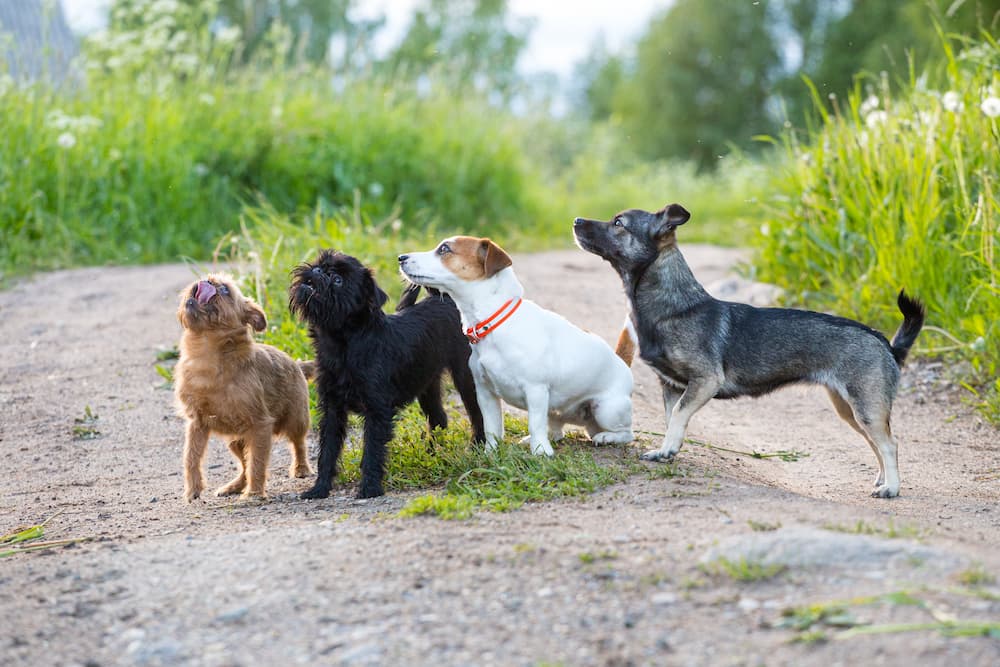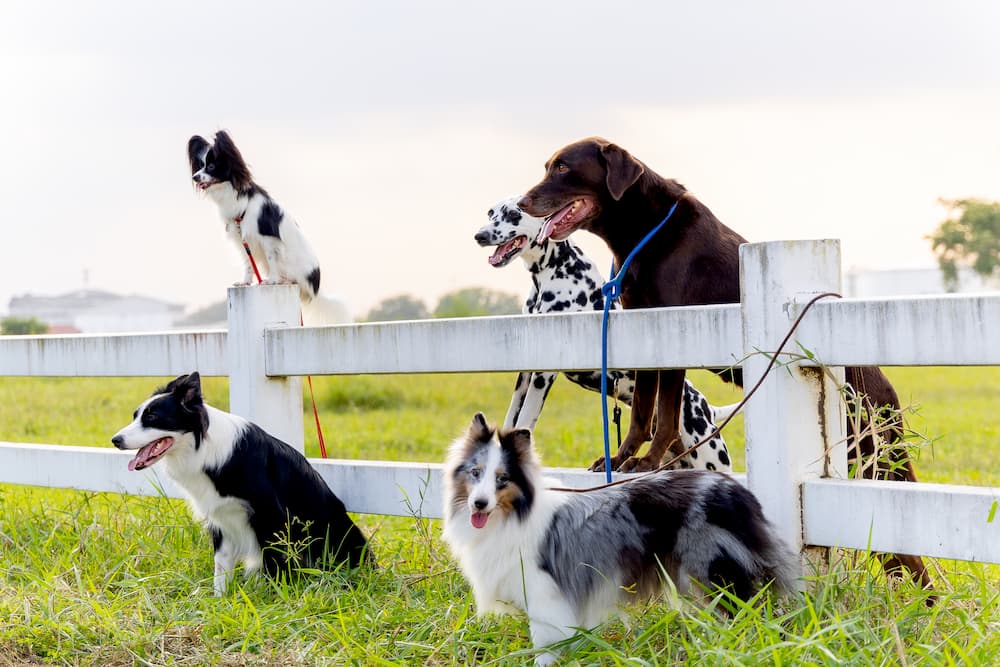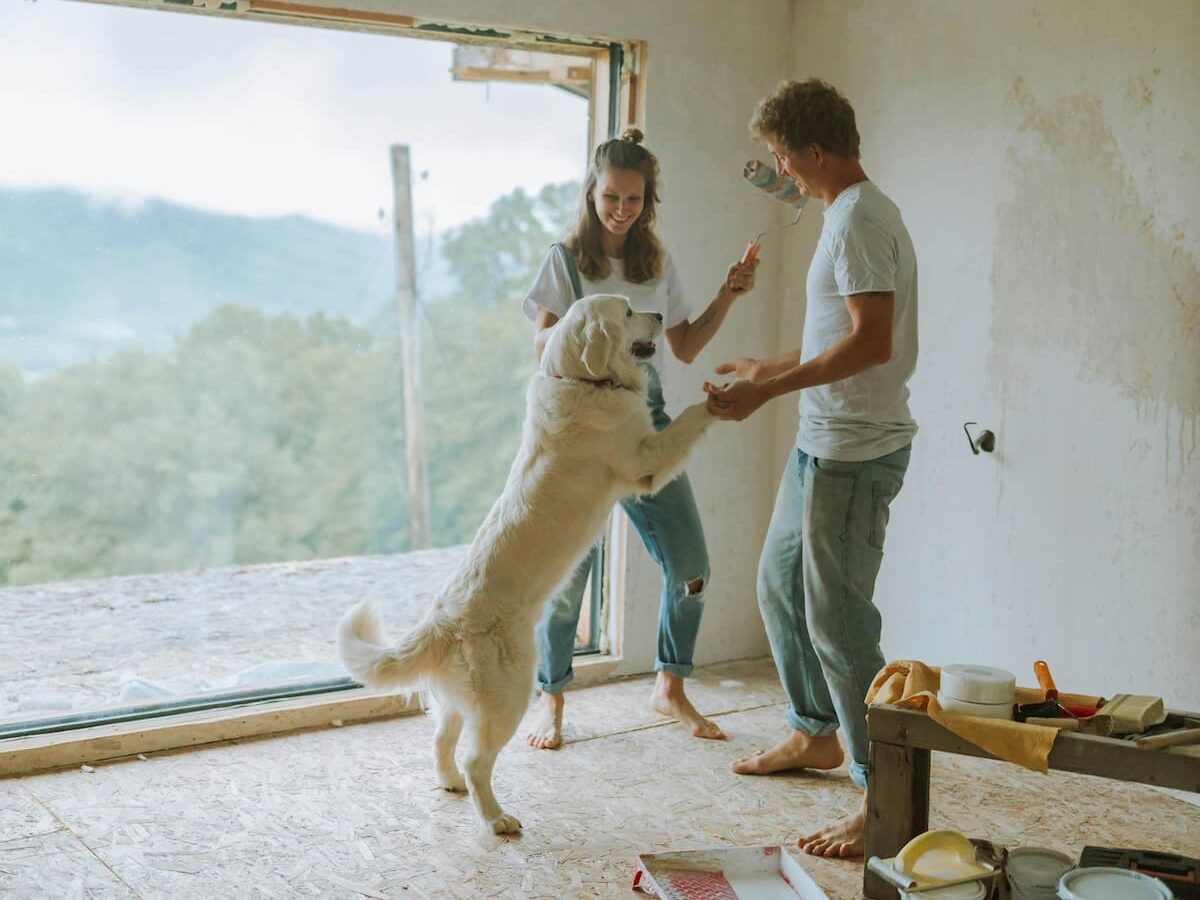Have you ever caught your dogs engaging in a rather peculiar behavior?
You know the one where they stand over each other, often with intense eye contact and wagging tails.
It’s almost as if they’re having a secret conversation that we humans are completely oblivious to.
Read on to learn more about this intriguing behavior.
Why do dogs stand over each other? Understanding the behavior and social dynamics
One particular behavior that can catch our attention is when dogs stand over each other.
You may have witnessed this during playtime at the park or even in your own home between your furry friends.
A dog standing over another dog is known as a “dominant posture.” It occurs when one dog positions itself with its front legs and head over the back of another dog.
But what does it mean when dogs assume this position?
One of the most common reasons why dogs stand over each other is to assert their dominance.
In the canine world, social hierarchies exist, and dogs utilize body language to establish their position within the pack.
Standing over another dog can be a way of asserting dominance, displaying confidence, and establishing who’s in charge.
However, it’s important to note that dominance doesn’t necessarily equate to aggression.
Dogs can use this posture to assert their authority without any ill intention.
Besides dominance, there are several other reasons why this behavior occurs:
- Seeking attention: Dogs may stand over each other as a way to get attention from their human or canine counterparts.
It’s their way of saying, “Hey, look at me!”
- Displaying playfulness: Standing over another dog can be a playful gesture.
It’s akin to an invitation or a way to initiate a fun game of chase or wrestling.
- Seeking comfort or reassurance: Dogs are social animals and often seek the company and comfort of their pack.
By standing over another dog, they may be seeking closeness and reassurance from a trusted companion.
- Marking territory: Dogs have a strong sense of ownership when it comes to their space.
Standing over another dog is also a way of marking territory. By physically asserting themselves, they leave their scent and establish their presence.
This behavior is particularly common during playtime or in the presence of valuable resources like food or toys. Another important aspect of a dog standing over another is communication.
Dogs have a complex language that relies heavily on body postures and signals.
By standing tall above another dog, they are sending a clear message. It can indicate that they are demanding attention, showing respect, or simply trying to initiate play.
In some cases, dogs may engage in this behavior due to anxiety or discomfort, using their dominant stance as a defense mechanism.
By paying attention to other accompanying body cues, such as a relaxed tail wag, lowered ears, or solicitous behavior, we can better understand the underlying intention behind this posture.
Building harmony in multi-dog households: Tips for managing standing over behavior in dogs
To manage standing over behavior in dogs and foster harmony in your multi-dog household, try these tips:
- Training and Socialization: Establish a regular training routine with each of your dogs individually and as a group.This will help them understand basic commands and improve their socialization skills, reducing the need to assert dominance through standing over behavior.
- Separate Resources: Provide separate food bowls, toys, and resting areas for each dog to eliminate any potential resource guarding triggers.
This will minimize conflicts and allow each dog to feel secure in their own space.
- Consistency and Reward-Based Training: Utilize positive reinforcement techniques to reward desirable behaviors and discourage dominant behaviors.
Consistency is key when training multiple dogs, so make sure everyone in the household follows the same rules and routines.
Remember, managing standing over behavior in multi-dog households requires patience, understanding, and consistent training.
By addressing the underlying causes and implementing these tips, you can create a harmonious environment where all your furry friends can coexist happily.
FAQ
Q: That makes sense! So, is this behavior limited to dominant dogs only?
A: Great question! While dominance plays a significant role, it’s not the only factor.
Sometimes, dogs may simply be trying to assert their physical presence and make themselves more noticeable or additionally secure in their surroundings.
It could be a way for them to feel more confident within their environment.
Standing over another dog can also serve as a protective measure, especially if one pup feels threatened or insecure.
Q: That’s fascinating! Are there any other reasons why dogs stand over each other?
A: Absolutely! Another possibility is that it’s simply a way for dogs to communicate and interact with one another.
By standing over another dog, they might be sending a message of playfulness, inviting the other dog to engage in a friendly interaction.
It could be a sort of doggy invitation to socialize and have a good time together.
Q: Wow, dogs are so complex! But what about situations where the dogs involved are best friends or siblings? Why do they still exhibit this behavior?
A: It’s true! Even among close canine companions, the instinctual behavior of standing over each other can persist. In these cases, it’s often a reflection of their lifelong bonds.
These dogs may continuously compete for social status or even challenge each other for authority, even if it’s all in playful fun.
It’s their way of forging a dynamic and exciting relationship together.
Q: I’ve noticed that my dog sometimes stands over other dogs during playdates.
Should I be concerned?
A: Not necessarily! During play, dogs may display various behaviors that can sometimes seem confrontational, but it’s important to remember that play, for dogs, often incorporates some level of roughness.
As long as the dogs are comfortable, engaged, and displaying reciprocal play behaviors such as tail wagging, relaxed body postures, and play bows, there’s typically no need to worry.
Closing Remarks
Dogs standing over each other, while a seemingly peculiar behavior, does in fact have a range of explanations.
Whether it’s a display of dominance, an invitation to play, or simply a way to assert their presence, dogs have their own unique language when it comes to social interactions.
So, the next time you catch your furry friend standing tall over another dog, remember to consider the context.
Are they trying to establish themselves as the alpha, or are they just looking for a friendly round of playtime? Understanding your dog’s behavior can deepen the bond between you and your canine companion, as you navigate the intricacies of their canine communication.










